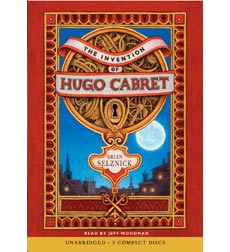How Do Audiobook Editors Decide?
Toward the end of last year, Big A little a asked: Why do some publishing houses (Random House) have their audio up and ready when the book is released? And, why do others wait and wait and wait[?] . . . Does anyone know which questions are at play here in deciding which books will have audio and which will not?
As I pointed out in the comments to Kelly’s posting, Random House owns Doubleday, the imprint that published the book she was hoping to find in audio form. So it can't be a matter of Doubleday not having an audio publishing partner available.
Rather, the audiobook field seems to be driven by print publishing. Books that have proven themselves in print are recorded, but the only new titles produced as audiobooks at the same time as their print editions seem to be those guaranteed big sellers from established authors with eager fans.
But is print success not just the primary but the only criterion for what makes a viable audiobook? Are there borderline cases, in which a book with marginal sales is recorded because it would be exceptionally good as an audio book, or set aside because it just wouldn't work in that medium? I looked for online interviews with audiobook editors to see if they answer this question, but came up empty. So does anyone have insider insights to share? The current popularity of audio editions, boosted by MP3 players and online downloads, is at odds with another trend: increasing use of graphics in novels for kids. I'm not talking about comics, but full prose novels that incorporate illustrations into their storytelling. Those don't translate well into audio form.
The current popularity of audio editions, boosted by MP3 players and online downloads, is at odds with another trend: increasing use of graphics in novels for kids. I'm not talking about comics, but full prose novels that incorporate illustrations into their storytelling. Those don't translate well into audio form.
As I wrote back here, I first took in Jules Feiffer's The Man in the Ceiling in audiobook form, but that book should not be in audio without more careful adaptation. The end of the book is incomprehensible without a visual dimension.
Last month, Scholastic issued an audiobook of another truly graphic novel, Brian Selznick’s Invention of Hugo Cabret, which required so much special treatment that it merited its own press release. The publisher boasts of "translating the more than three hundred pages of original black and white illustrations in the novel using vivid sound design." Still, the book is so visual that Scholastic also includes "an exclusive behind-the-scenes bonus DVD" for listeners to watch.


1 comment:
J.L.: The comments I received on my (kvetching) post were excellent. And, it's an issue I hope to revisit. I just want to do some research first.
That being said...Hugo Cabret is not a book I would EVER look for in audio.
Post a Comment